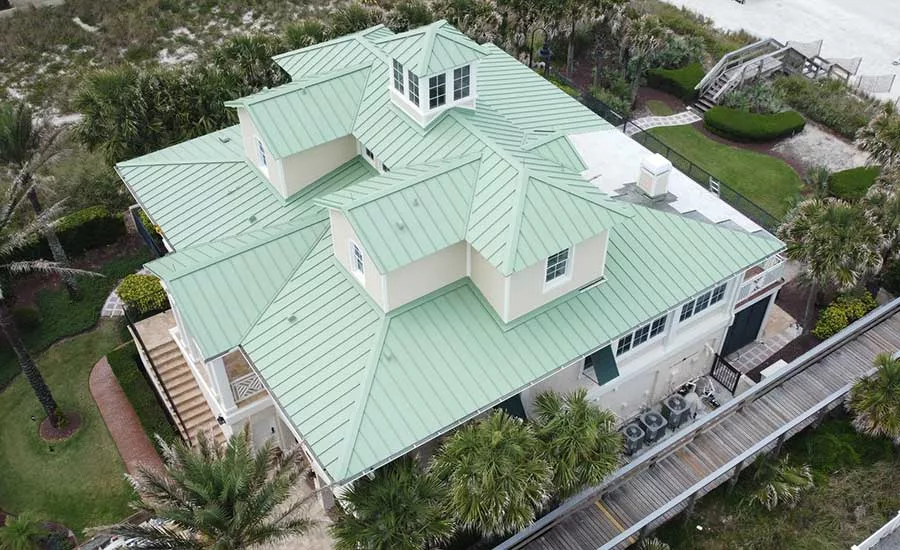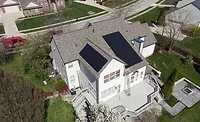New Roofing Trends for 2024
2023’s Residential Roofing Contractor of the Year identified the key trends to watch as 2024 rolls in

As we embrace a new year, evaluating upcoming industry trends remains crucial to any company’s success. This evaluation involves understanding what customers valued highly in the prior year and forecasting upcoming preferences. We acknowledge that these trends can be influenced by the persistent escalation of business expenses – notably within the construction sector – driven by technology and innovations, commercial and residential market shifts, material trends and regional trends.
In the roofing sector, company leaders must anticipate and address these changes by staying aware of the expected developments in 2024. This means staying informed about the most sought-after roof types and designs, their regional and climatic variations, strategies for maintaining cost efficiency and plans for innovative roofing product development.
Shifting Markets
The roofing industry experienced notable shifts in 2023, particularly in the residential sector, where private equity involvement notably increased. Roll-ups — acquisitions of multiple roofing companies — became more prevalent in both commercial and residential sectors. This shift toward consolidation is expected to continue into 2024, reflecting a growing understanding of equity among current owners. Moreover, the industry saw heightened levels of professionalism among its players, transitioning away from the traditional mom-and-pop shop model to a more corporate structure.
Material Trends
Regarding material trends, the industry placed less emphasis on aesthetics and instead focused on the importance of durability and long-lasting materials. There was a rising interest in synthetic materials due to their durability, safety features and environmental friendliness.
Customers are increasingly willing to invest more in products with the expectation of greater longevity, such as synthetic materials. These synthetic materials also provide benefits for roofing crews, including slip-resistance and overlap guides that improve consistency and accuracy during installation.
Newer roofing materials often come with higher initial costs but ensure more long-term returns on investment. For instance, though three times more expensive than traditional asphalt roofs, synthetic slates pay for themselves in the long run due to their longevity and ability to weather storm events.
Solar roofing also presents an opportunity for ROI by offsetting utility consumption costs over time. Additionally, the use of solar energy has evolved and improved to increase efficiency.
The density of the cells in a solar roof has grown, allowing solar panels to convert more electricity from the amount of sunlight received. Because of this advancement, fewer panels are installed on the roof, and more power is easily generated.
The Department of Solar Energy (DOE) has also attempted to make solar roofs more affordable by pledging to cut costs by 60% within the next 10 years. The DOE has funded $128 million towards lowering these costs and enhancing solar energy technologies.
According to a United Nations report, solar energy is also one of the least carbon-intensive sources of electricity generation. It helps minimize the use of fossil fuels and can reduce our overall impact on the environment. When consumers use solar power, they use a clean and renewable energy source that produces a smaller carbon footprint. This limits greenhouse gas emissions and makes a household or business more sustainable.
While roofing aesthetics like colors are not at the forefront of anticipated trends in the year ahead, it is still a big concern for customers. The most in-demand colors for 2024 roofing projects are similar to the trends we saw in 2023, including Weathered Wood — a base of deep brown and accents of clay and lighter brown — and Driftwood, which is a bit darker, featuring cooler gray tones.
Both palettes are neutral and tend to match typical home colors. Recently, however, the most popular roof colors overwhelmingly consist of gray and black shingles.
A white house with a black roof and trim is the new modern look.
Regional Trends
Regional trends in roofing preferences are observed based on specific environmental conditions; for instance, regions prone to hurricanes, such as Florida's coastline, favored metal roofs due to their superior wind resistance in 2023.
Areas that experienced frequent hailstorms, like the Midwest, leaned towards impact-resistant materials such as SBS-modified shingles or synthetic and metal shingles. The options for roofing types have significantly evolved. The variety of material types allows customers in any region to prioritize roofing materials that offer protection against specific weather conditions.
Technology and Innovations
In terms of technological advancements, the industry is witnessing the integration of AI for improved customer communication and more advanced Customer Relationship Management systems. Drones are increasingly used for precise measurements, while augmented reality technology provides better 3D renderings to visualize roofing projects. There is also a need for better integration among these technologies to streamline operations and enhance efficiency.
Anticipated changes in the regulatory landscape include more stringent measures for consumer protection, safety protocols and sustainability efforts in the roofing sector. Like other industry players, Bone Dry is evaluating and adopting new technologies while ensuring compliance with evolving regulations, and focusing on employee retention and customer satisfaction to navigate the challenges while meeting the changing expectations of customers in the coming years.
Looking for a reprint of this article?
From high-res PDFs to custom plaques, order your copy today!





